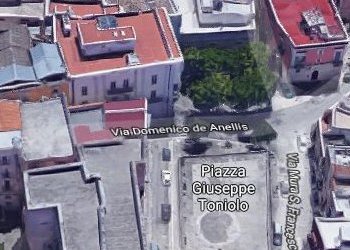Saint Richard
Richard of Andria (England… - Andria, 1200 ca.) was bishop of the town in the 12th century and is venerated as a saint by the Roman Church. Along with the Virgin of Miracles he has been patron saint of Andria since 1858.
Against all the historical evidence, the popular tradition believes he was the very first bishop of Andria in the Early christian period (fifth century).
Actually a bishop of English origin, named Richard, who lived in the 12th century, took part in the third Lateran Council in 1179 (celebrated by pope Alexander III) and was still alive in 1196, according to documentary sources.
It is very likely that he was the bishop who, following the Roman Church reform promoted by pope Alexander III, ruled the diocese of Andria for about forty years and made every effort to repair the church's damaged reputation due to those corrupt clergymen accused of simony and Nicolaism.
However, his apostolic activity focused on the evangelization of the people of Andria who started to venerate him as a saint.
His cult was still very strong when Francis II del Balzo found Saint Richard’s remains on 23rd April 1438 and managed to have him canonized by pope Eugene IV and officially recognized as patron saint of the town, as directly reported by the same duke Francis in Historia inventionis et translationis gloriosi corporis s. Richardi Anglici confessoris et episcopi Andriensis
Saint Mary of Miracles
According to tradition, on the morning of the 10th of March 1576 the Virgin came to a boy in his dreams and later a charming byzantine image of the Virgin and Child was discovered in the lama of Santa Margherita: the picture showed the Virgin crowned with twelve stars (symbolising the apostles), featuring on the sides the Sun and the Moon (symbolising respectively Christ and the same Virgin).
The news of the discovery of the holy image as well as of the several miracles attributed to the holy image spread so rapidly that the duke of Andria, Fabrizio II Carafa, and the bishop, Luca Fieschi, promoted the building of a church, with a convent annexed to it, to safeguard the sacred place. The increasing devotion of the people to the Marian image maybe explains the surprising speed in building the religious place right on top of the cave where the byzantine fresco was discovered.
In the first half of the 16th century a second church with a convent annexed to it was built to welcome the numerous pilgrim worshippers; the so called “upper” church was projected by Cosimo Fanzago.
The intercession of the Virgin of Miracles, who saved Andria from the epidemic cholera that plagued Apulia in 1855 and from the earthquake in1857, led the bishop Longobardi to declare her patron saint of Andria together with Saint Richard.
Address: via De Anellis n. 48, angolo piazza Toniolo 5, 6, 7, 8.
Phone: +39 0883593382
Email: museodiocesano@diocesiandria.org
Andria diocese's web address



